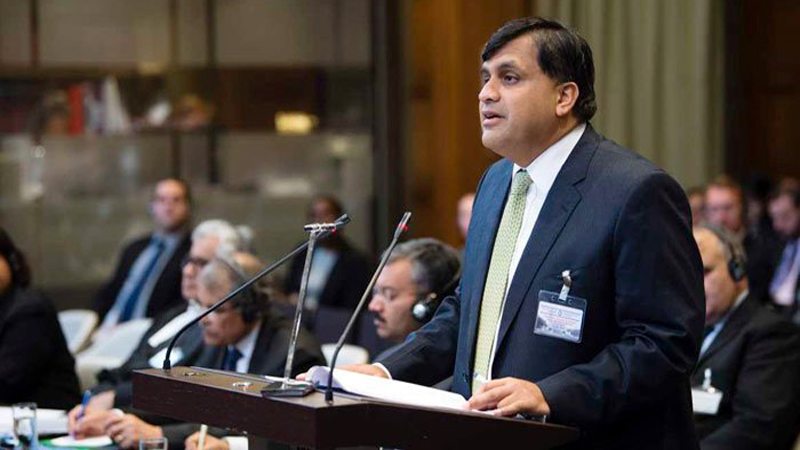News Desk |
The foreign office on Wednesday has strongly condemned the brutal killing of Mir Hafeezullah –a senior leader of Tehreek-e-Hurriyat Azad Jammu and Kashmir– at his house in Achabal.
FO spokesperson Dr. Mohammad Faisal, via Twitter, condemned the “continuing Indian atrocities in the occupied territory, including the killing of three Kashmiris and injuries to eight others, including three girls, yesterday”.
FO spokesperson Dr. Mohammad Faisal in a statement on Twitter said that Pakistan strongly condemns the atrocities of India in Indian occupied Kashmir. .
#Pakistan strongly condemns the brutal assassination of Kashmiri leader Hafizullah Mir and the continuing indian atrocities in IOK including the killing of 3 Kashmiris & injuries to 8 others, including 3 girls yesterday by Indian occupation forces #Kashmirbleeds (1/2)
— Ministry of Foreign Affairs – Pakistan (@ForeignOfficePk) November 21, 2018
He also appreciated the Organization of Islamic Conference for their statement in support of Kashmiris.
We appreciate the statement of the #OIC SG conveying firm support of the OIC to the Kashmiris & call for urgent establishment of the COI recommended by the #OHCHR @mBachelet (2/2)
— Ministry of Foreign Affairs – Pakistan (@ForeignOfficePk) November 21, 2018
Mir Hafeezullah was killed by Indian forces on Tuesday. According to the media reports, the Indian armed agents barged into the house of Mir Hafeezullah Achabal area of the district and opened indiscriminate fire, injuring him and his wife. They were rushed to the nearby hospital where doctors pronounced Mir Hafeezullah as brought dead.
The killing of youth triggered anti-India demonstrations in Nadigam, Indian troops fired bullets, pellets and teargas shells on the protesters, injuring many of them including three women.
Mir Hafeezullah, who was released from Indian jail last month, had been receiving life threats from unknown phone numbers and had informed police about anonymous calls. Before him, three other Hurriyat leaders namely Muhammad Yousuf Nadeem, Hakeem-ur-Rehman Sultani, and Tariq Ahmad Ganai had been targeted since February, this year.
Hurriyat leaders condemned the killing of Mir Hafeezullah and said that the cold-blooded murder of Mir and other Hurriyat leaders before him was a part of deep Indian conspiracy to suppress genuine voices for freedom. Meanwhile, Indian troops on Tuesday martyred four Kashmiri youth in Shopian district also, during a cordon and search operation in Nadigam area of the district.
Earlier, a commando of Indian army was killed and three others were injured in an attack in the same area. The killing of youth triggered anti-India demonstrations in Nadigam, Indian troops fired bullets, pellets and teargas shells on the protesters, injuring many of them including three women.
Read more: India agrees to hold talks with Kashmiri leaders. Why?
Indian state brutality has been increasing in Occupied Kashmir due to two factors: a resurgence in the Kashmiri Independence movement after the death of famous freedom fighter Burhan Wani and the election of the Hindutva fundamentalist BJP to power. The region of Kashmir is a flashpoint between the two nuclear-armed powers of South Asia. The dispute began when during the partition of the British occupied subcontinent, the refusal of the area’s hereditary ruler Hari Singh to comply with his people’s wishes led to a rebellion.
Faced with losing his fiefdom to a people’s army aided by tribesman from across the border, the ruler acquiesced to India in return for military aid. This led to a war between newly found India and Pakistan and later on the division of Kashmir into Azad Kashmir and IOK. However, Indian militarization was unable to break the will of the Kashmiri populace desiring self-determination. Despite agreeing to an UN-ordered plebiscite, India has not fulfilled its promise, instead, it turned Kashmir into the most militarized zone on Earth.














